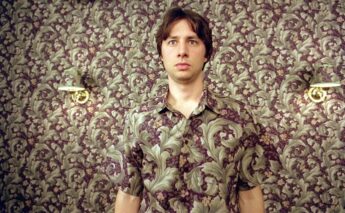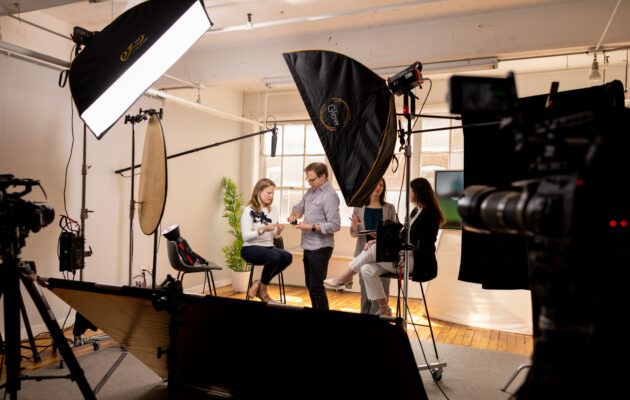So you're getting ready to do a video interview. You know your subject matter inside and out. You've read through the interview questions well in advance and you have prepared some insightful responses. All you need to do now is decide what to wear.
Arriving "camera-ready" is an essential part of preparing for a video interview. Your clothing and apparel choices will affect not only how you look on camera, but also the overall quality of the image, and perhaps most importantly, the sound - which is essential to achieving high production value in a video.
WHAT TO WEAR
Solid Colors
Blues, greens, greys, earth tones and pastels work well with most subjects. Simpler is usually better.
Form-Fitting, Well-Shaped Clothing
Blazers, jackets, and shirts with collars are generally flattering and give you a “sculpted” appearance.
A Microphone-Friendly Top
The video team may decide to record you with a lapel microphone. Buttoned shirts and V neck shirts work well with lapel microphones. Blazers and jackets are terrific for this.
WHAT TO AVOID
Moisturizer
Moisturizer, especially with SPF qualities, may cause you to look shiny on camera.
Solid Black, White, And Red
There are always exceptions, but in general these colors are not ideal for professional video interviews. A black or white shirt inside a blazer or jacket is fine, so is a red tie.
Tops With Colors Close To Your Skin Tone
You want to avoid tops that, under certain lighting conditions, might look like an extension of your skin.
Shapeless Clothing
Loose, shapeless clothing tends to be unflattering on camera, and droops down when you are seated. It’s also generally not great for attaching a microphone.
Branded Clothing
The viewer’s focus should be on you and your words – and branding is a distraction. It generally looks unprofessional, and in some situations it can cause legal headaches.
Clothing That Matches The Background
If the background is light grey, for example, a light grey blazer is a mistake. Here is a more extreme example:

Stripes And Small Patterns
Stripes and small patterns can lead to the wavy moiré effect.
Noisy Clothing Or Accessories
Anything that rattles or scratches will be picked up by the microphone. Simpler is better when it comes to accessories.
Hats And Glasses
Hats cast a shadow over your face, and glasses can reflect the lighting. If you need glasses to do your interview, or feel more comfortable wearing them, by all means do so – but it is better to skip the glasses if you don’t need them.
HAIR AND MAKE UP
For most video interviews, it’s best to have neat and tidy hair, no stray hairs, and preferably long hair is tied back or in an updo. Bring along some hair spray just in case you have an uncooperative strand of hair. For those who shave, do it just before the interview (when possible) so that you don’t have visible stubble. And even if you are going for a more alternative look, you don’t want your hair to distract the viewer from your message.
Make up should be subtle – it’s easier to add than to subtract. A little powder is enough to counter the shine of the lights. If you generally wear make up, bring it with you to the shoot for touch ups. Avoid glossy make up - On camera it can look like sweat, and you don't want that.
